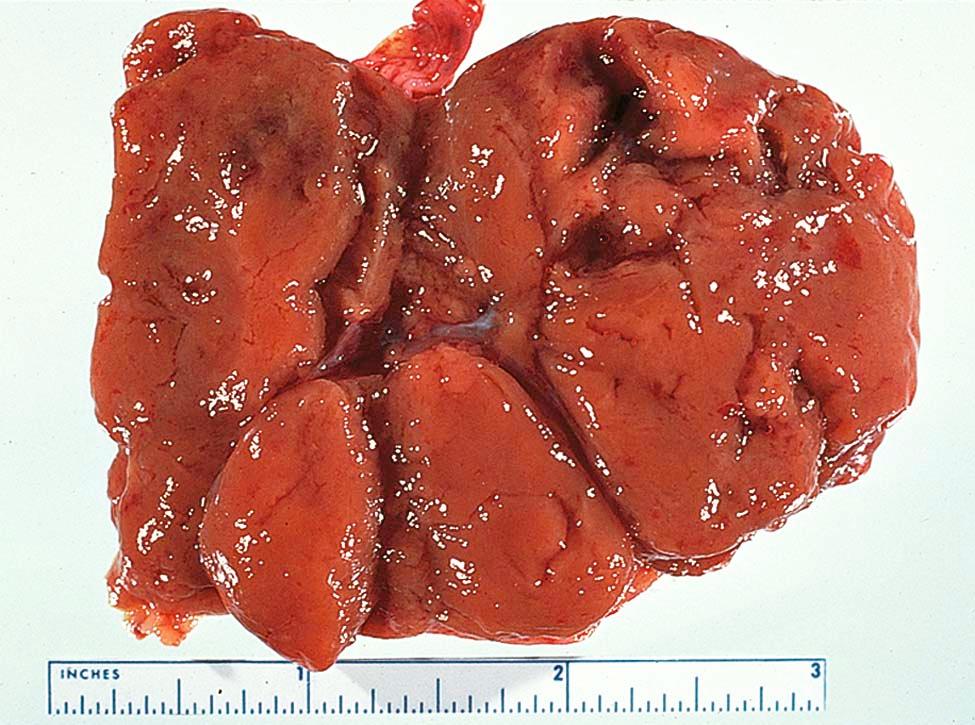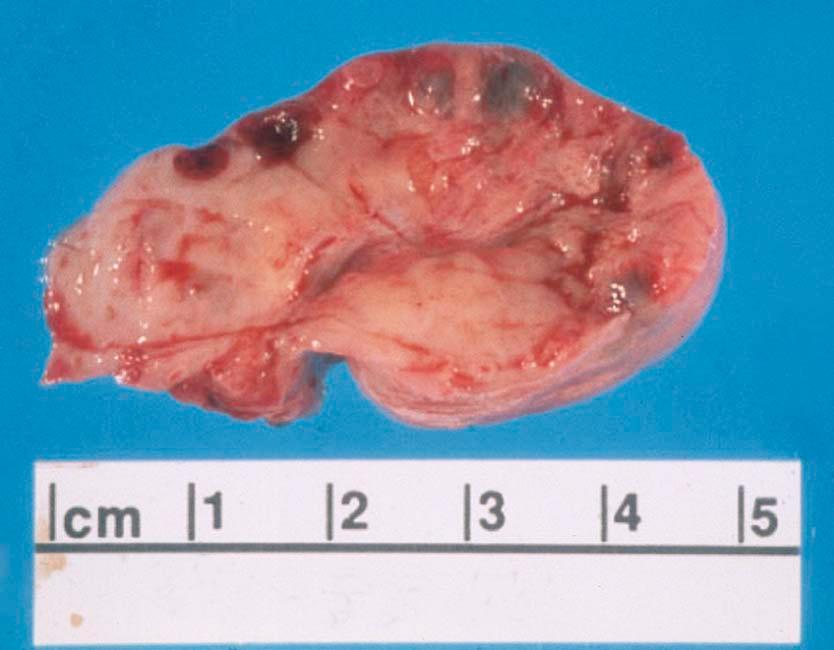Physical Address
304 North Cardinal St.
Dorchester Center, MA 02124
The adnexa are composed of the ovaries and fallopian tubes, along with the blood vessels, ligaments, and connective tissues located along both sides of the uterus. Benign ovarian masses may be classified as functional, inflammatory, metaplastic, or neoplastic. Functional cysts are the most common masses and almost always resolve spontaneously. Differentiating between benign and malignant ovarian masses is extremely important and can be challenging.
A risk assessment tool, the Risk of Malignancy Index (RMI), may be used to help determine the likelihood that ovarian masses are malignant. Nonmalignant masses are generally unilateral, cystic (without solid components), mobile, and without ascites. CA-125 tumor marker levels are usually normal but false positives may occur. Benign ovarian neoplasms are divided into three cell types: epithelial, stromal, and germ-cell.
The most common ovarian neoplasm in the premenopausal woman is the benign cystic teratoma or dermoid cyst which is a germ-cell type of tumor. In postmenopausal women serous cyst adenomas are the most common. Management of ovarian masses ranges from observation and ultrasonographic follow-up for presumed functional cysts, to surgical removal. Laparoscopic cystectomy is appropriate for cystic masses that are considered very low risk for malignancy after appropriate evaluation.
Recent evidence suggests that some ovarian cancers may actually originate in the fallopian tubes. Benign neoplasms of the tubes include epithelial adenomas and polyps, myomas from the tubal musculature, inclusion cysts, and angiomas. Paraovarian cysts are usually located within the broad ligament.
Congenital anomalies of the ovaries are uncommon. Absence, duplication, and ectopic location of ovarian tissue, as well as supernumerary ovaries may occur. Rarely, an ovatestis (ovarian and testicular tissue) may be present, resulting in intersex problems. Turner syndrome (45 XO) is characterized by rudimentary streak gonads.
The ovaries and fallopian tubes, along with the blood vessels, ligaments, and connective tissues located along both sides of the uterus, are referred to as the adnexa. In this chapter, after presenting the recommended workup and management of benign adnexal masses, the abnormal development and congenital anomalies of the ovaries and fallopian tubes are discussed.
The human ovary is prone to develop a wide variety of tumors, the majority of which are benign. Ovarian cysts are common, with a reported clinical prevalence of 15% in premenopausal and 8% in postmenopausal women. Most of these cysts resolve over time without treatment. As indicated in Table 20-1 , ovarian masses may be functional, inflammatory, metaplastic, or neoplastic. During the childbearing years, 70% of noninflammatory benign ovarian tumors are functional. The remainder are either neoplastic (20%) or metaplastic (endometriomas, accounting for 10%).
| Pathogenesis | Specific Type |
|---|---|
| Functional | Follicular cysts |
| Corpus luteal cysts | |
| Theca-luteal cysts | |
| Polycystic ovaries (multiple follicular cysts) | |
| Inflammatory | Salpingo-oophoritis |
| Pyogenic oophoritis—puerperal, abortal, or intrauterine device–related | |
| Granulomatous oophoritis | |
| Metaplastic | Endometriomas |
| Neoplastic | Premenarchal years—10% are malignant |
| Menstruating years—15% are malignant | |
| Postmenopausal years—50% are malignant |
The management of ovarian tumors, whether functional, benign, or malignant, involves difficult decisions that may affect a woman's hormonal status or her future fertility. Although only functional cysts and benign ovarian neoplasms are considered in detail in this chapter, diagnostic methods to differentiate benign masses from malignant ones are discussed.
Dozens of ovarian follicles form the “cohort of follicles” of each menstrual cycle. It is from this cohort that usually only one dominant follicle will fully develop to about 2 cm in size in each cycle (see Chapter 4 ). If ovulation occurs, the remaining follicle becomes the corpus luteum. Functional cysts, including follicular and corpus luteal cysts, may appear from time to time as part of the normal function of the ovary. To be classified a “functional cyst,” the follicle must reach a diameter of at least 3 cm. Functional cysts may cause a dull sensation or heaviness in the pelvis or, occasionally, pelvic pain.
A follicular cyst, lined by one or more layers of granulosa cells, develops when an ovarian follicle fails to rupture. Similarly, a corpus luteal cyst may develop if the corpus luteum grows to over 3 cm and fails to regress normally after 14 days. Hemorrhagic cysts form when invasion of ovarian vessels into the corpus luteal cyst 2 to 3 days after ovulation causes bleeding within the cyst. Hemorrhagic corpus luteal cysts are more likely to cause symptoms and, on occasion, rupture.
Other specific types of lutein cysts may occur in association with abnormally high serum levels of human chorionic gonadotropin (hCG) or increased ovarian sensitivity to gonadotropins. Theca-luteal cysts may develop in association with the high levels of hCG present in patients with a hydatidiform mole or choriocarcinoma. Patients undergoing ovulation induction with gonadotropins, clomiphene, or letrozole may also develop theca-lutein cysts. Theca-lutein cysts are usually bilateral, may become quite large (>30 cm), and characteristically regress slowly after the gonadotropin level falls. Rarely, when follicles are stimulated with gonadotropins, theca-lutein cysts can become so extensive as to cause massive ascites and dangerous problems with systemic fluid imbalance. This condition is referred to as ovarian hyperstimulation syndrome or OHSS (see Chapter 34 ).
A luteoma of pregnancy is a related condition in which there is a hyperplasic reaction of ovarian theca cells, presumably from prolonged hCG stimulation during pregnancy. The luteomas characteristically appear as brown to reddish-brown nodules that may be cystic or solid. A luteoma of pregnancy ( Figure 20-1 ) may be associated with multifetal pregnancies or hydramnios. They can cause maternal virilization in 30% of women and, less often, ambiguous genitalia in a female fetus. Although ovarian enlargement may be impressive, surgical resection is not indicated, because luteomas regress spontaneously postpartum.

Polycystic ovarian syndrome, a functional disorder generally associated with chronic anovulation, hyperandrogenism, and insulin resistance, can also produce enlarged ovaries with multiple simple follicles ( Figure 20-2 ). The hormonal aspects and treatment of this syndrome are discussed further in Chapter 33 .

An ovarian follicular cyst is usually asymptomatic, but a patient may present with delayed menses, abnormal uterine bleeding, or pelvic pain. Occasionally, a functional cyst may undergo torsion (see below) or it may rupture, which may produce acute lower abdominal pain and tenderness and the differential diagnosis must include ectopic pregnancy, pelvic abscess, or adnexal torsion of an ovarian neoplasm. Occasionally, a significant hemoperitoneum may be present.
Most follicular cysts are unilocular (“simple”), and rarely can be as large as 15 cm in diameter. Regression usually occurs during the subsequent menstrual cycles. In general, a corpus luteal cyst is apt to be smaller but more firm or even solid in consistency, and is more likely to cause pain or signs of peritoneal irritation. Because it may continue to produce progesterone, it is also more likely to cause delayed menses.
The presumptive diagnosis of a functional ovarian cyst is usually made when a 5- to 8-cm cystic adnexal mass is noted on bimanual examination and imaged with transvaginal ultrasonography; it is confirmed when the lesion regresses over the course of the next several cycles. In general, a functional cyst is mobile, unilateral, and not associated with ascites. On rare occasions, the mass may exceed 8 cm and be quite tender to palpation. Occasionally, hemorrhagic corpus luteal cysts may have a solid rather than a cystic consistency, and can be confused with ovarian cancer.
Masses that are suspicious for malignancy are more solid, fixed, and irregular, and they may be bilateral. Any adnexal mass found in the presence of ascites or an upper abdominal mass should be considered malignant until proven otherwise, unless the patient has hyperstimulation syndrome.
Table 20-2 lists the current modalities that are available to evaluate adnexal masses along with the sensitivity and specificity as calculated by the U.S. Agency for Healthcare Research and Quality (AHRQ). None of these modalities is accurate enough to be used alone for diagnosis.
| Modality | Sensitivity (%) | Specificity (%) |
|---|---|---|
| Gray-scale transvaginal ultrasonography (UTX) | 0.82-0.91 | 0.68-0.81 |
| Doppler UTX | 0.86 | 0.91 |
| Computed tomography | 0.90 | 0.75 |
| Magnetic resonance imaging | 0.91 | 0.88 |
| Positron emission tomography | 0.67 | 0.79 |
| CA-125 level measurement | 0.78 | 0.78 |
A pelvic ultrasound will confirm the cystic nature of the mass, but it cannot differentiate with certainty between a functional and a neoplastic tumor. Table 20-3 contains a risk assessment tool that can be useful for evaluating suspicious adnexal masses in pre- and postmenopausal women. It is called the Risk of Malignancy Index or RMI. CA-125 levels may be “falsely” elevated in some premenopausal women with endometriosis or fibroids as well as other benign conditions, and assay numbers for CA-125 may vary among laboratories. For these reasons the RMI should be interpreted carefully, particularly in premenopausal patients.
| Criteria | Scoring System |
|---|---|
| A. Menopausal Status | |
| Premenopausal | 1 |
| Postmenopausal | 3 |
| B. Ultrasonic Features | |
| Multiloculated | 1 feature = 1 |
| Solid areas | 2 or more features = 3 |
| Bilaterality | |
| Ascites | |
| C. Serum CA-125 titer | Absolute value (normal = <35 U/mL) |
A follow-up ultrasound should be performed 6 weeks after the initial ultrasound. A cyst that enlarges and increases in complexity should be considered suspicious. Based upon a recent large study of over 30,000 women, cysts that do not enlarge or increase in complexity may be followed with ultrasound every few months until stability is documented, and then frequent follow-up imaging may be safely discontinued. According to the study findings, care for clinical judgment must occur because the adverse consequences of delayed diagnosis of ovarian cancer is significant.
Become a Clinical Tree membership for Full access and enjoy Unlimited articles
If you are a member. Log in here